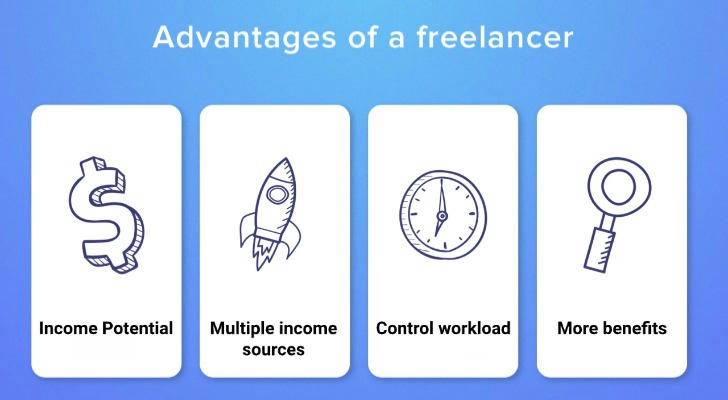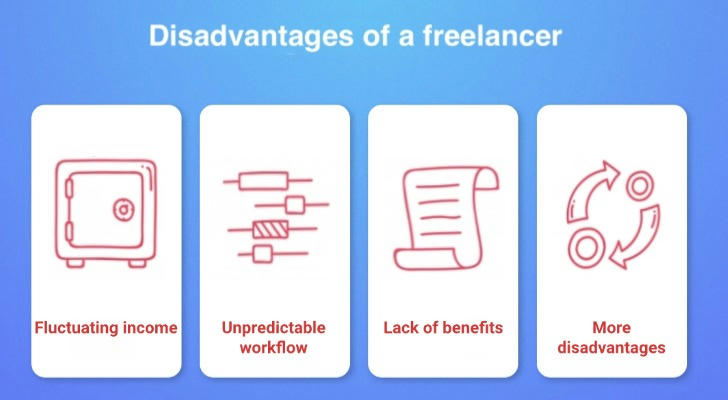The Pros and Cons of Freelancing and the Gig Economy
Freelancing and gig work have revolutionized the modern labor market, offering flexible schedules and the chance to work on diverse projects. However, these opportunities come with challenges, such as income instability and limited benefits. According to a Gallup survey, nearly 36% of U.S. workers participate in some form of gig work, while a report from Statista valued the U.S. freelance market at approximately $1.2 trillion in 2020. This article examines the advantages and disadvantages of freelancing and gig work, focusing on two key aspects: income flexibility versus instability, and the balance between autonomy and uncertainty.📊

Income Flexibility vs. Instability 💰
Freelancing offers a level of income flexibility not typically found in traditional employment. The ability to choose projects and set rates allows for potential earnings that can exceed those of conventional jobs. However, this flexibility often comes at the cost of financial predictability.
Advantages

Earning Potential: Freelancers can often charge premium rates for specialized skills. For instance, top-tier freelance graphic designers or software developers can command significantly higher fees than their counterparts in full-time positions.
Multiple Income Streams: Engaging in various projects simultaneously allows for diversification. If one project slows down, income from others can help stabilize overall earnings.
Control Over Workload: The option to accept or decline projects provides the freedom to manage work schedules and balance professional pursuits with personal commitments. This flexibility can lead to increased productivity during peak creative periods.
Disadvantages

Income Fluctuation: Despite the high-earning potential, income variability is a common issue. According to a survey conducted by Upwork, nearly 60% of freelancers experience inconsistent monthly earnings. Seasonal fluctuations and market demand can lead to periods of lower income.
Unpredictable Work Flow: The gig economy often lacks the steady stream of projects available in traditional employment. Without regular contracts, managing cash flow becomes challenging, and saving for future expenses can be difficult.
Lack of Benefits: Unlike full-time roles that typically include health insurance, retirement plans, and paid leave, gig workers must secure these benefits independently. This can lead to higher personal expenses and financial strain during unforeseen events.
Autonomy vs. Uncertainty ⚖️
One of the most appealing aspects of freelancing is the freedom to work autonomously. The ability to set one’s own hours, choose clients, and decide on work methods can result in a highly satisfying professional life. However, this autonomy also introduces uncertainty that may affect long-term career stability.
Advantages
Self-Determination: Gig work allows for complete control over the work environment. Decisions about the type of work accepted, the timing of projects, and even location are determined independently. This autonomy can lead to a sense of personal fulfillment and professional satisfaction.
Creative Freedom: Many freelancers report increased creativity due to the lack of rigid corporate structures. The opportunity to experiment with new ideas and projects without strict oversight often fosters innovation and personal growth.
Customized Work-Life Balance: The gig economy can make it easier to design a schedule that fits personal needs. Whether it is allocating time for family, pursuing hobbies, or furthering education, the freedom to set one’s own hours can improve overall quality of life.
Disadvantages
Job Security Concerns: The absence of long-term contracts can result in a lack of job security. Economic downturns or sudden shifts in market demand may lead to abrupt interruptions in work, leaving gig workers vulnerable.
Isolation: Working independently often means less social interaction compared to a traditional office environment. This isolation may impact networking opportunities and professional development, as well as personal well-being.
Inconsistent Career Path: The varied nature of freelance work may hinder the establishment of a clear career trajectory. Without a structured path for promotion or career growth, long-term professional development can become a significant challenge.

Data Insights and Practical Strategies 🚀
Data from multiple studies indicate that while freelancing can offer impressive earnings and independence, the challenges related to income fluctuation and job security should not be underestimated. The following strategies can help mitigate some of these challenges:
Budgeting and Financial Planning: Setting aside a portion of earnings during high-income periods can provide a buffer during lean months. Financial advisors often recommend maintaining an emergency fund equivalent to at least three months of expenses.
Continuous Skill Development: Investing in professional development can lead to higher rates and more reliable contracts. According to LinkedIn’s 2021 Workplace Learning Report, professionals who engage in continuous learning are 50% more likely to secure high-paying freelance opportunities.
Networking and Collaboration: Building a strong professional network can lead to more consistent project referrals and collaborations. Engaging in industry events, online communities, or local coworking spaces can help expand opportunities and reduce isolation.
Diversification of Clients: Relying on a single client or a narrow range of projects can be risky. A diversified client base ensures that the impact of losing one major project is minimized.
Final Considerations 🌟
Freelancing and the gig economy represent both promising opportunities and notable challenges. The potential for high earnings and autonomy is balanced by the realities of income instability and career uncertainty. With nearly 60% of freelancers facing inconsistent earnings and many dealing with the absence of traditional employment benefits, careful planning and proactive strategies are essential.
By understanding the pros and cons outlined above and implementing practical measures such as robust financial planning, continuous skill enhancement, and proactive networking, success in the gig economy becomes more attainable. This dynamic work model offers the freedom to shape a career based on personal strengths and market demands—turning challenges into opportunities for growth and innovation.
Embracing the gig economy requires adaptability and a proactive mindset. With thoughtful strategy and determination, the unique advantages of freelancing can pave the way for a rewarding and sustainable career.
